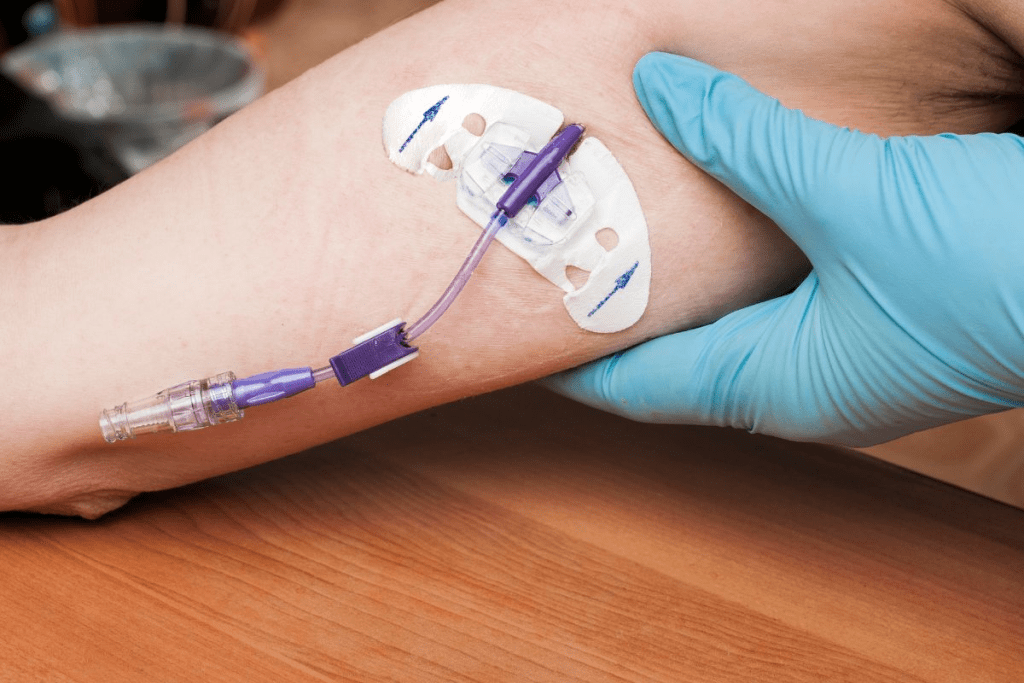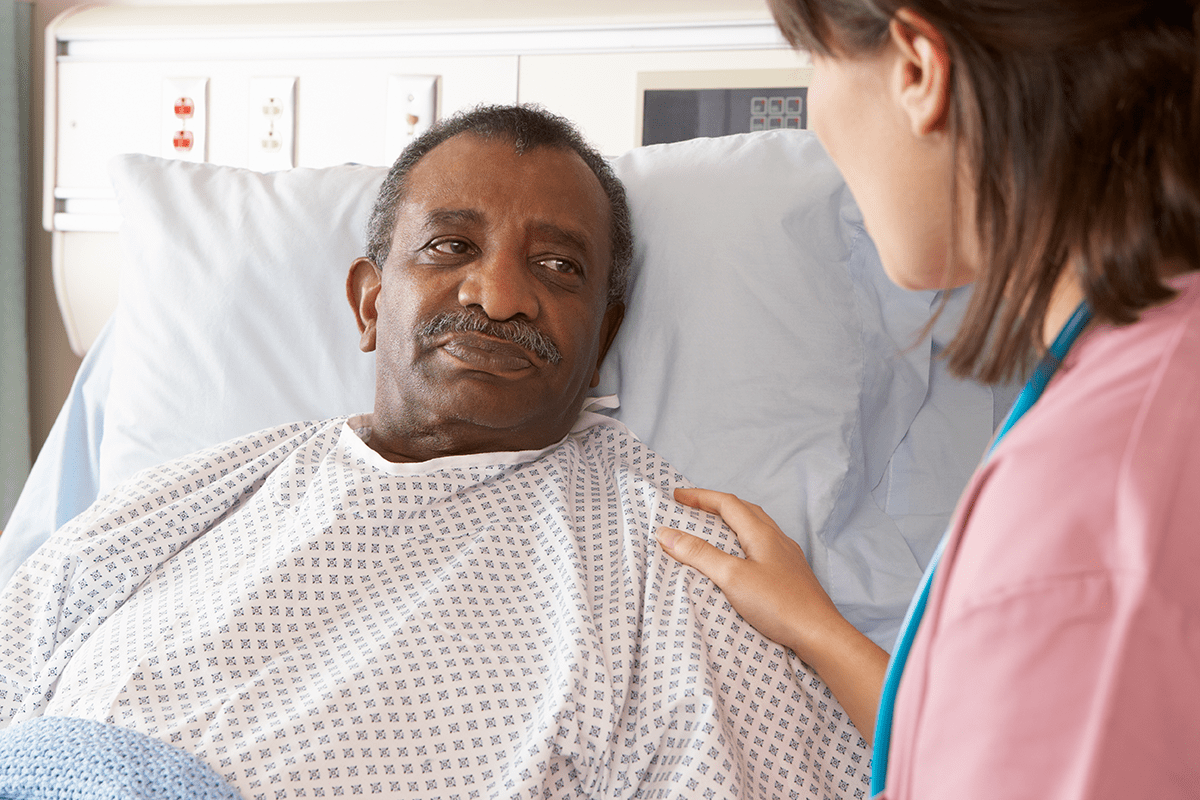Last Updated on November 26, 2025 by Bilal Hasdemir

What is neoadjuvant treatment? It’s a type of chemotherapy given before the main cancer treatment, such as surgery, to help shrink tumors and make the primary treatment more effective.
Chemotherapy is a common and powerful approach for many cancers, but it often comes with challenging side effects ” one of the most distressing being hair loss. Patients undergoing neoadjuvant treatment may experience these effects even before their main therapy begins.
Understanding how neoadjuvant treatment works and what side effects to expect helps patients prepare mentally and physically, making the journey through cancer care a bit more manageable.
Key Takeaways
- Chemotherapy can cause significant hair loss in cancer patients.
- Neoadjuvant treatment is chemotherapy given before the primary treatment.
- Understanding neoadjuvant treatment helps patients prepare for potential side effects.
- Hair loss is a common side effect of chemotherapy.
- Patients should discuss their treatment options and potential side effects with their healthcare provider.
What is Neoadjuvant Treatment?
Neoadjuvant treatment is a cancer therapy given before the main treatment. It aims to shrink tumors. This makes them easier to remove surgically or more ready for treatments like radiation or chemotherapy.
This method is key in treating many cancers. It helps in making tumors smaller. This can lead to better surgery results and possibly longer life for patients.
Neoadjuvant treatment has many benefits. It lets doctors see how well the treatment works early on. If the tumor shrinks, it helps in planning further treatment. It also helps in managing symptoms and improving life quality for cancer patients.
Knowing about neoadjuvant treatment is vital for patients. It’s a big part of cancer care. It offers hope and better chances for many patients.
Benefits of Neoadjuvant Treatment
Neoadjuvant treatment has changed cancer care a lot. It has many benefits for patients. One big plus is that it can shrink tumors. This makes surgeries less invasive and can lead to better results for patients.
Another key benefit is that it lets doctors assess the effectiveness of the treatment. By seeing how the tumor reacts, doctors can change the treatment plan if needed. This makes the treatment more effective overall.
Neoadjuvant treatment also treats tiny cancer cells early. This can greatly improve a patient’s chances of recovery. It also gives doctors insights into the tumor’s biology. This helps find new targets for treatment.
In summary, neoadjuvant treatment is a crucial part of cancer care. Knowing its benefits helps both patients and doctors make better choices about treatment.
Hair Loss and Chemotherapy

Chemotherapy and hair loss are closely linked. The type of chemotherapy, dosage, and individual factors play a role. Chemotherapy targets fast-growing cells, including cancer and hair follicles, causing hair loss.
Chemotherapy-induced hair loss can be tough on patients. It affects not just their looks but also their self-esteem and how they see their body.
The amount of hair loss varies among people. It depends on the chemotherapy drugs, dosage, and treatment length. Some treatments lead to more hair loss than others.
Factors Influencing Hair Loss
- Type of Chemotherapy: Different drugs have different effects on hair.
- Dosage and Duration: Higher doses and longer treatments raise the risk of hair loss.
- Individual Response: People react differently to chemotherapy, affecting hair loss.
Knowing about these factors can help patients prepare for chemotherapy’s side effects, like hair loss. While it’s a tough part of cancer treatment, understanding it can make it easier to handle.
Neoadjuvant Treatment and Hair Loss
It’s important to understand how neoadjuvant treatment affects hair loss in cancer patients. This treatment is given before the main therapy. It can greatly impact a patient’s life, especially the hair loss side effect.
Hair loss, or alopecia, is a common side effect of chemotherapy, which is often used in neoadjuvant treatment. The amount of hair loss varies. It depends on the chemotherapy drugs, their amount, and the patient’s health.
“Hair loss can be a visible reminder of a patient’s cancer diagnosis, affecting their self-esteem and body image.”
Managing hair loss during neoadjuvant treatment involves several strategies. Scalp cooling can lessen hair loss. Patients are also advised to use gentle hair care products. They might consider wigs or other hair prosthetics.
It’s essential for healthcare providers to discuss the potential for hair loss with patients before starting neoadjuvant treatment, so they can prepare emotionally and practically. Support from family, friends, and support groups can also play a vital role in helping patients cope with hair loss.
Managing Hair Loss During Neoadjuvant Treatment

Managing hair loss during neoadjuvant treatment needs a mix of preparation and smart strategies. Hair loss, or alopecia, is a common side effect of chemotherapy. It affects many patients getting neoadjuvant treatment.
First, understanding when hair loss will start is key. It usually begins a few weeks after starting chemotherapy. Knowing this helps patients prepare emotionally and practically.
Strategies for Managing Hair Loss
- Using scalp cooling caps to reduce hair loss
- Cutting hair short to minimize the impact of hair loss
- Using gentle hair care products
- Exploring wig options before hair loss begins
Scalp cooling caps are popular for reducing hair loss during chemotherapy. These caps cool the scalp. This reduces blood flow and the amount of chemotherapy reaching hair follicles.
| Method | Description | Effectiveness |
| Scalp Cooling Caps | Reduces blood flow to the scalp, minimizing chemotherapy delivery to hair follicles | High |
| Gentle Hair Care | Using mild shampoos and conditioners to reduce hair stress | Moderate |
| Wigs and Prosthetics | Provides a cosmetic solution to hair loss | High |
It’s also crucial to take care of your overall well-being during this time. Emotional support from family, friends, or support groups is vital. It helps cope with the stress of hair loss.
By using these strategies, patients can manage hair loss better during neoadjuvant treatment. This improves their quality of life during a tough time.
Coping with Hair Loss
Emotional support is key in helping patients deal with hair loss. Neoadjuvant treatment fights cancer but often causes hair loss. This can be very upsetting for many patients.
To handle this side effect, we need a variety of strategies. Emotional support from loved ones and support groups can really help. It can make the distress of hair loss less severe.
Patients find different ways to cope with hair loss. Some use wigs, scarves, or hats to hide their heads. Others try emotional coping mechanisms like counseling or therapy to face the psychological effects.
Healthcare providers should give full support, including emotional and psychological care. This helps patients face the challenges of hair loss and other side effects.
Also, connecting patients with others who’ve gone through similar things is important. Support groups, online or in-person, offer great emotional support. They create a sense of community and understanding.
Neoadjuvant Treatment for Different Types of Cancer
Neoadjuvant treatment is a new hope for cancer patients. It works for many types of cancer. The treatment is customized for each patient’s cancer type and stage.
It’s used for cancers like breast, lung, and rectal cancer. For breast cancer, chemotherapy can make tumors smaller. This makes them easier to remove surgically. In lung cancer, therapy can also shrink tumors, making them easier to remove.
| Cancer Type | Neoadjuvant Treatment Approach |
| Breast Cancer | Chemotherapy to shrink tumors before surgery |
| Lung Cancer | Chemotherapy and/or radiation to reduce tumor size before surgery |
| Rectal Cancer | Chemoradiation to shrink tumors before surgery |
Side Effects of Neoadjuvant Treatment
Neoadjuvant treatment is effective but can cause side effects. These can differ based on the cancer type, treatment intensity, and the patient’s health.
Side effects might include feeling very tired, nausea, hair loss, and changes in blood cells. It’s crucial for patients to talk to their healthcare provider about these. This way, they can understand what to expect and how to handle these issues.
Neoadjuvant Treatment vs. Adjuvant Treatment
When it comes to cancer treatment, two terms are often used: neoadjuvant treatment and adjuvant treatment.
| Characteristics | Neoadjuvant Treatment | Adjuvant Treatment |
| Purpose | Shrink the tumor before surgery | Eliminate remaining cancer cells |
| Timing | Before main treatment | After main treatment |
| Goal | Make surgery easier | Reduce recurrence risk |
Understanding the differences between neoadjuvant and adjuvant treatment is crucial for effective cancer care.
The Role of Neoadjuvant Treatment in Cancer Care
Neoadjuvant treatment has changed how we fight cancer. It’s given before the main treatment. This has greatly improved how well patients do.
It works by making tumors smaller. This makes them easier to remove or more likely to respond to other treatments. It’s especially helpful for cancers like breast, lung, and rectal cancer.
The benefits of neoadjuvant treatment are clear:
- It makes tumors smaller, helping them get removed more easily.
- It shows how well the tumor responds to treatment, helping plan further care.
- It can lead to longer lives by catching and treating cancer early.
Using neoadjuvant treatment lets doctors make treatment plans that fit each patient. This makes treatment more effective and personal.
Key aspects of neoadjuvant treatment include its ability to:
- Make surgery more successful by shrinking tumors.
- Help decide on further treatment based on how the tumor responds.
- Improve chances of survival by treating cancer early.
Neoadjuvant Treatment and Patient Outcomes
Neoadjuvant treatment is key in fighting cancer. It uses treatments before the main treatment to improve results. This helps doctors make patients’ care better.
Doctors use different treatments like chemotherapy or targeted therapy. This depends on the cancer type and stage. Studies show it can make surgeries easier by shrinking tumors.
Neoadjuvant treatment can also help patients live longer. Research shows it can lead to better survival rates. This is compared to not getting this treatment.
It also helps doctors see how well the tumor responds to treatment. This info helps plan the next steps in care. It can make the treatment more effective for the patient.
In short, neoadjuvant treatment is crucial for better patient care. It can shrink tumors and possibly increase survival chances. It’s a big part of treating cancer effectively.
Advances in Neoadjuvant Treatment
The world of cancer treatment is changing fast. Neoadjuvant treatment is a big part of this change. Keeping data safe is very important.
Neoadjuvant treatment has shown great promise. It helps shrink tumors before surgery. This can lead to better outcomes for patients.
Looking ahead, we can expect even more breakthroughs. Personalized medicine is one area that’s getting a lot of attention. It tailors treatments to fit each patient’s needs.
As treatments get better, keeping data safe will stay a top priority. This ensures that all the new advances can be used to help patients.
FAQ
What is neoadjuvant treatment?
Neoadjuvant treatment is a cancer treatment given before the main treatment. This is usually surgery. It aims to shrink the tumor, making it easier to remove.
How does neoadjuvant chemotherapy work?
Neoadjuvant chemotherapy uses drugs to kill cancer cells. This shrinks the tumor. It makes the tumor easier to remove surgically.
What are the benefits of neoadjuvant treatment?
Neoadjuvant treatment has several benefits. It reduces tumor size. This makes surgery more effective. It can also improve patient outcomes.
Does neoadjuvant treatment cause hair loss?
Yes, neoadjuvant chemotherapy can cause hair loss. It targets cells that grow quickly, including hair follicles.
How is hair loss managed during neoadjuvant treatment?
Hair loss can be managed with scalp cooling. Gentle hair care is also helpful. Wigs or hair prosthetics can also be used.
What is the difference between neoadjuvant and adjuvant treatment?
Neoadjuvant treatment is given before the main treatment. Adjuvant treatment is given after. It aims to eliminate any remaining cancer cells.
What types of cancer are treated with neoadjuvant therapy?
Neoadjuvant therapy is used for various cancers. This includes breast cancer, lung cancer, and rectal cancer.
What are the side effects of neoadjuvant treatment?
Side effects vary by treatment and patient. They can include hair loss, fatigue, and nausea.
How does neoadjuvant treatment impact patient outcomes?
Neoadjuvant treatment can improve outcomes. It reduces tumor size. This makes surgery more effective. It can also improve survival rates.
What are the latest advances in neoadjuvant treatment?
Advances include new chemotherapy regimens. There are also targeted therapies and immunotherapies.
References
- National Cancer Institute. (2021). Hair loss (alopecia) and cancer treatment. https://www.cancer.gov/about-cancer/treatment/side-effects/hair-loss






